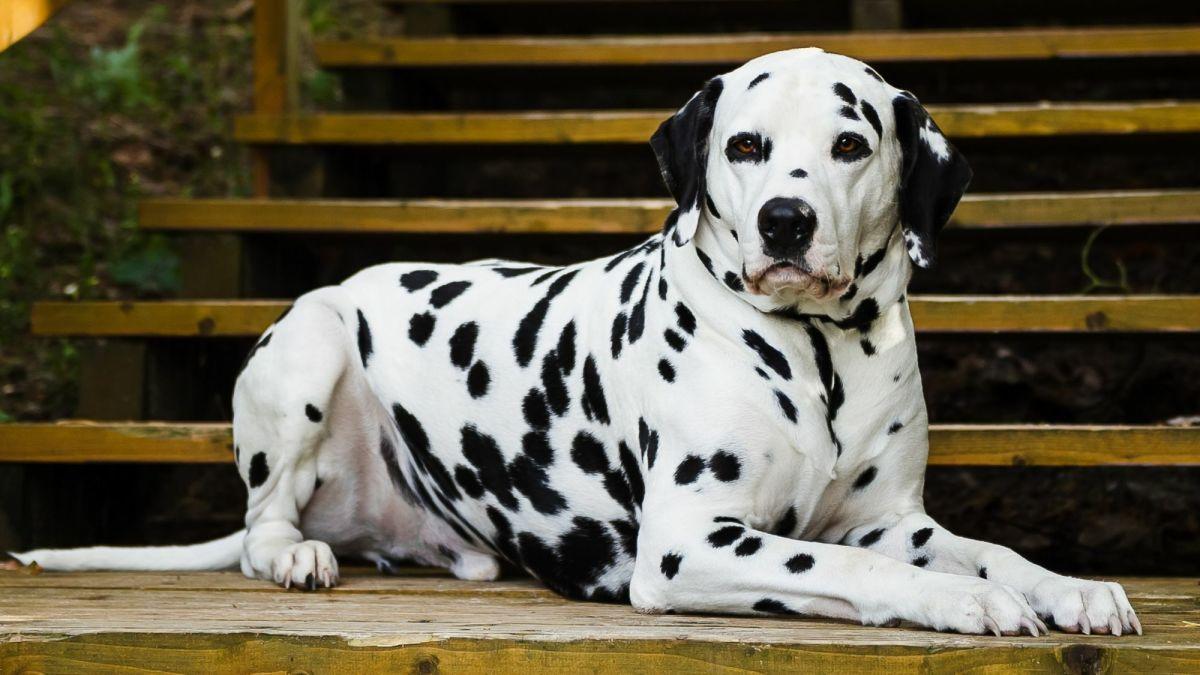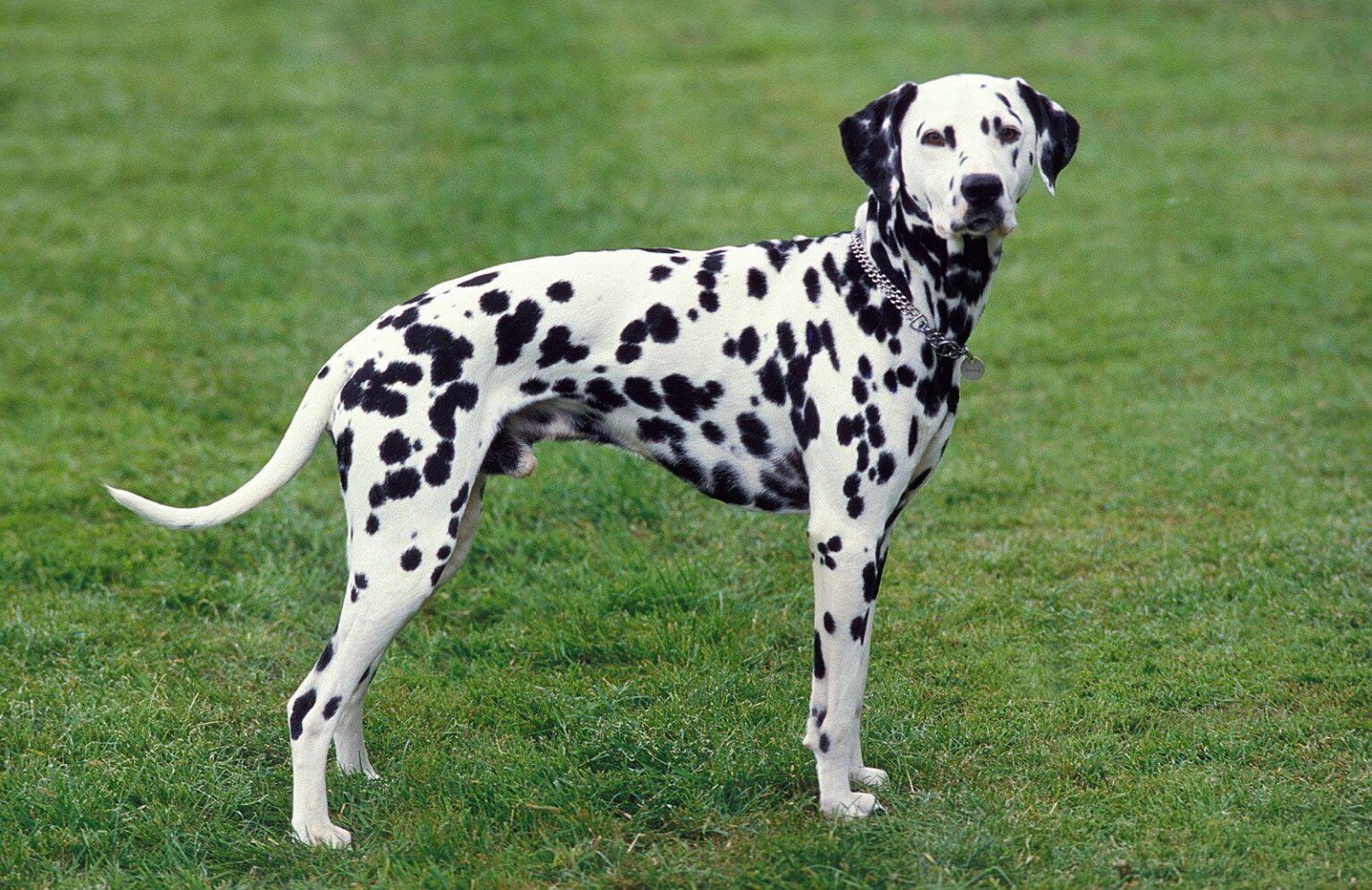When considering adding a furry member to your family, especially one as unique and energetic as a Dalmatian, it’s essential to weigh the pros and cons—especially if you have children at home. Known for their striking spotted coats and lively personalities, Dalmatians have captured the hearts of dog lovers for generations. However, not every dog breed is the perfect fit for every family dynamic.
In this article, we’ll explore the temperament and characteristics of Dalmatians, providing insights into their compatibility with children. We’ll also discuss important factors to consider before bringing one of these charming companions into your home. Whether you’re an active family or seeking a faithful friend for your little ones, understanding what a Dalmatian brings to the table can help you make an informed decision on your journey to pet parenthood.
Table of Contents
- Understanding the Temperament of Dalmatians and Their Interactions with Children
- Factors to Consider When Introducing a Dalmatian to Your Family
- Training and Socialization Tips for Promoting Positive Relationships
- Creating a Safe and Engaging Environment for Kids and Dalmatians
- Q&A
- In Retrospect

Understanding the Temperament of Dalmatians and Their Interactions with Children
Dalmatians, known for their striking appearance and spirited personality, are often described as energetic and playful. Their temperament is generally friendly and affectionate, making them wonderful companions for families. However, it’s essential to consider their boundless energy and strong-willed nature when introducing them to young children. Dalmatians thrive in active environments, and they require regular exercise to maintain their health and happiness. If not adequately stimulated, they can become bored and potentially mischievous. Establishing a structured routine that includes playtime can help mitigate this risk while promoting a strong bond between the dog and children.
When it comes to interactions with children, understanding the dog’s behavior is paramount. Dalmatians are typically good-natured and loyal, but their playful exuberance can sometimes be overwhelming for younger kids. Teaching children how to interact with the dog safely and respectfully is crucial to fostering a positive relationship. Here are a few key points to consider:
- Supervise all interactions, especially with toddlers.
- Teach children to recognize the dog’s body language.
- Encourage gentle play to avoid accidental roughhousing.
- Provide a safe space for the Dalmatian to retreat if feeling overwhelmed.
Creating an environment where both children and Dalmatians feel secure will lead to joyful experiences together. Families should engage in training sessions and socialization from an early age, which can significantly enhance the dog’s responsiveness and adaptability around young ones. To help visualize the characteristics of Dalmatians, consider the following table:
| Trait | Description |
|---|---|
| Energy Level | High – Needs regular exercise. |
| Affectionate | Loves to be around people. |
| Temperament | Friendly, loyal, and intelligent. |
| Trainability | Moderate – Requires consistent training. |

Factors to Consider When Introducing a Dalmatian to Your Family
Before welcoming a Dalmatian into your home, it’s essential to evaluate whether your family can accommodate their unique needs. Dalmatians are known for their high energy levels and playful demeanor, making them great companions but also requiring significant physical and mental stimulation. Consider if your family can manage the exercise demands of a Dalmatian, as they typically need at least 1 to 2 hours of daily activity. This includes walks, playtime, and social interactions. In addition, assess whether your children are old enough to interact safely with a larger, spirited dog, as Dalmatians can be boisterous and may unintentionally knock over younger kids during play.
Another crucial factor is the environment in which you live. Dalmatians thrive in active households where they can be part of family life. Evaluate the following aspects before making your decision:
- Living Space: Do you have enough room for a large, energetic dog to roam and play?
- Time Commitment: Is your family prepared to invest time in training and socialization?
- Allergies: Are any family members allergic to dogs, particularly to the short hair of a Dalmatian?
- Other Pets: How will a Dalmatian fit in with your current pets?
Your answers to these questions will help ensure that both your family and the Dalmatian can enjoy a harmonious home together.
Training and Socialization Tips for Promoting Positive Relationships
To ensure that Dalmatians build positive relationships with children, early training and socialization are essential. Start by introducing your Dalmatian puppy to various environments, people, and especially children. This exposure helps them become well-adjusted adults who are comfortable in diverse situations. Use positive reinforcement techniques such as treats and praise to reward good behavior, making learning a fun experience. Consistency is key; establish a routine for training sessions and adhere to it, so your dog understands what is expected of them.
Moreover, incorporating playtime into training can enhance the bond between your Dalmatian and your kids. Here are some tips to promote this bond:
- Supervised Playdates: Always monitor interactions between your dog and children to ensure safety for both.
- Interactive Toys: Use toys that encourage teamwork—like tug-of-war or fetch—creating shared experiences.
- Teaching Commands: Engage children in teaching simple commands, fostering responsibility and connection.
Regularly scheduled playdates with well-behaved dogs can also help your Dalmatian learn appropriate social cues. The table below summarizes the ideal age for different training aspects:
| Age | Training Focus |
|---|---|
| Puppy (8-16 weeks) | Basic Commands & Socialization |
| Young Adult (6 months – 2 years) | Advanced Commands & Obedience |
| Adult (2 years+) | Reinforcement & Ongoing Socialization |
Creating a Safe and Engaging Environment for Kids and Dalmatians
When welcoming a Dalmatian into a family with children, it is essential to establish a safe and engaging environment that fosters positive interactions. Dalmatians are active and playful, making it important to supervise playtime to ensure that children and dogs interact safely. Here are a few tips to create harmony in the household:
- Establish Clear Boundaries: Teach children to respect the dog’s space, especially during mealtimes or when the Dalmatian is resting.
- Encourage Gentle Play: Show kids how to engage with the dog without being too rough, promoting gentle petting and calm games.
- Educate About Canine Behavior: Help children understand dog body language to recognize when the Dalmatian is feeling overwhelmed or uncomfortable.
To enhance this environment further, consider implementing training sessions that involve both the dog and the children. This can strengthen their bond while teaching essential commands that improve behavior and obedience. Here’s a simple training activity table:
| Activity | Description | Benefits |
|---|---|---|
| Sit Command | Train the Dalmatian to sit upon command using treats. | Promotes focus and calmness. |
| Fetch | Play fetch with a ball or toy, encouraging the dog to bring it back. | Encourages physical activity for both the dog and kids. |
| Hide and Seek | Have children hide and call the Dalmatian to find them. | Strengthens the bond while providing mental stimulation. |
Q&A
Q: Are Dalmatians good with kids?
A: Yes, Dalmatians can be great companions for children, but their suitability largely depends on the individual dog’s temperament and the child’s age. Dalmatians are known for their playful and energetic nature, which can make them fun playmates for active kids. However, it’s essential to consider both the dog’s personality and the child’s behavior to ensure a harmonious relationship.
Q: What factors should I consider before adopting a Dalmatian if I have kids?
A: Before adopting a Dalmatian, consider the following factors:
- Activity Level: Dalmatians require regular exercise and mental stimulation. Ensure your family can meet these needs to avoid behavioral issues.
- Temperament: Every dog has a unique personality. Meet several Dalmatians to find one that fits well with your family’s dynamics.
- Supervision: Young children should always be supervised when interacting with the dog to prevent accidents and teach respectful behavior toward pets.
- Training: Consistent training is essential for Dalmatians. A well-trained dog is more likely to behave well around children.
- Socialization: Ensure the dog is well-socialized with kids and other pets, as this helps them feel comfortable in a family environment.
Q: Can Dalmatians get along with children of all ages?
A: While Dalmatians can be good with children, interactions may vary depending on the child’s age and behavior. Younger kids may be more prone to unexpected movements or loud noises that might startle a Dalmatian. It’s important to teach children how to interact gently and respectfully with dogs. Older children may enjoy playing and exercising with a Dalmatian, as long as they understand how to engage safely.
Q: Do Dalmatians have any specific needs that parents should be aware of?
A: Yes, Dalmatians have specific needs that families should consider:
- High Energy: They require a lot of exercise, ideally with daily walks, runs, or play sessions, to keep them physically and mentally stimulated.
- Grooming: Dalmatians have short coats that shed moderately, so regular brushing is recommended to manage loose hair.
- Health Concerns: Dalmatians can be prone to certain health issues, such as deafness and urinary stones. Regular vet check-ups are essential for maintaining their health.
- Social Interactions: Dalmatians thrive on social interaction, so they should not be left alone for long periods. This is important for their emotional well-being.
Q: What are some tips for introducing a Dalmatian to my children?
A: Here are some tips for a smooth introduction:
- Choose the Right Dog: Opt for a Dalmatian with a calm temperament and good experiences with children.
- Teach Kids Basic Commands: Before introducing the dog, teach your children basic commands like “sit,” “stay,” and ”gentle.” This helps them communicate effectively with the dog.
- Gradual Introduction: Allow the dog to meet your children gradually. Start with short, supervised interactions and gradually increase the time as both the dog and children become more comfortable.
- Positive Reinforcement: Reward both the dog and children for positive interactions. This encourages good behavior on both sides.
- Establish Rules: Set clear rules for your kids about how to treat the dog, such as not pulling its tail or bothering it while it eats or sleeps.
Q: Should I rescue a Dalmatian or adopt from a breeder?
A: Both options have their merits. Rescuing a Dalmatian can provide a loving home to a dog in need and may offer a dog with a known history, which can be beneficial for families with children. Breeders can provide puppies with specific traits you may be looking for. Regardless of your choice, it’s important to do thorough research to ensure you’re getting a healthy and well-socialized dog.
Q: What resources can help me make the best decision for my family?
A: You can seek guidance from local animal shelters, breed rescues, and reputable breeders. Additionally, talking to veterinarians or dog trainers can provide valuable insights into the breed’s behavior and needs. Online forums and community groups focused on Dalmatians can also be a great source of information and support.
In Retrospect
Dalmatians can make wonderful companions for families with children, but it’s essential to weigh the various factors that influence their compatibility. Their high energy levels, need for social interaction, and distinctive personalities mean that they thrive in environments where they receive ample exercise and attention. If you’re considering adopting a Dalmatian, be sure to assess your family’s lifestyle and readiness to commit to their unique needs. With proper training, socialization, and a nurturing environment, Dalmatians can not only adapt well to family life but also become cherished members of your household. Remember, every dog is an individual, so take the time to understand the specific temperament of the dog you are considering. If you’re prepared for the commitment, a Dalmatian can bring joy, loyalty, and a sprinkle of fun to your family dynamic. Happy pet parenting!
















